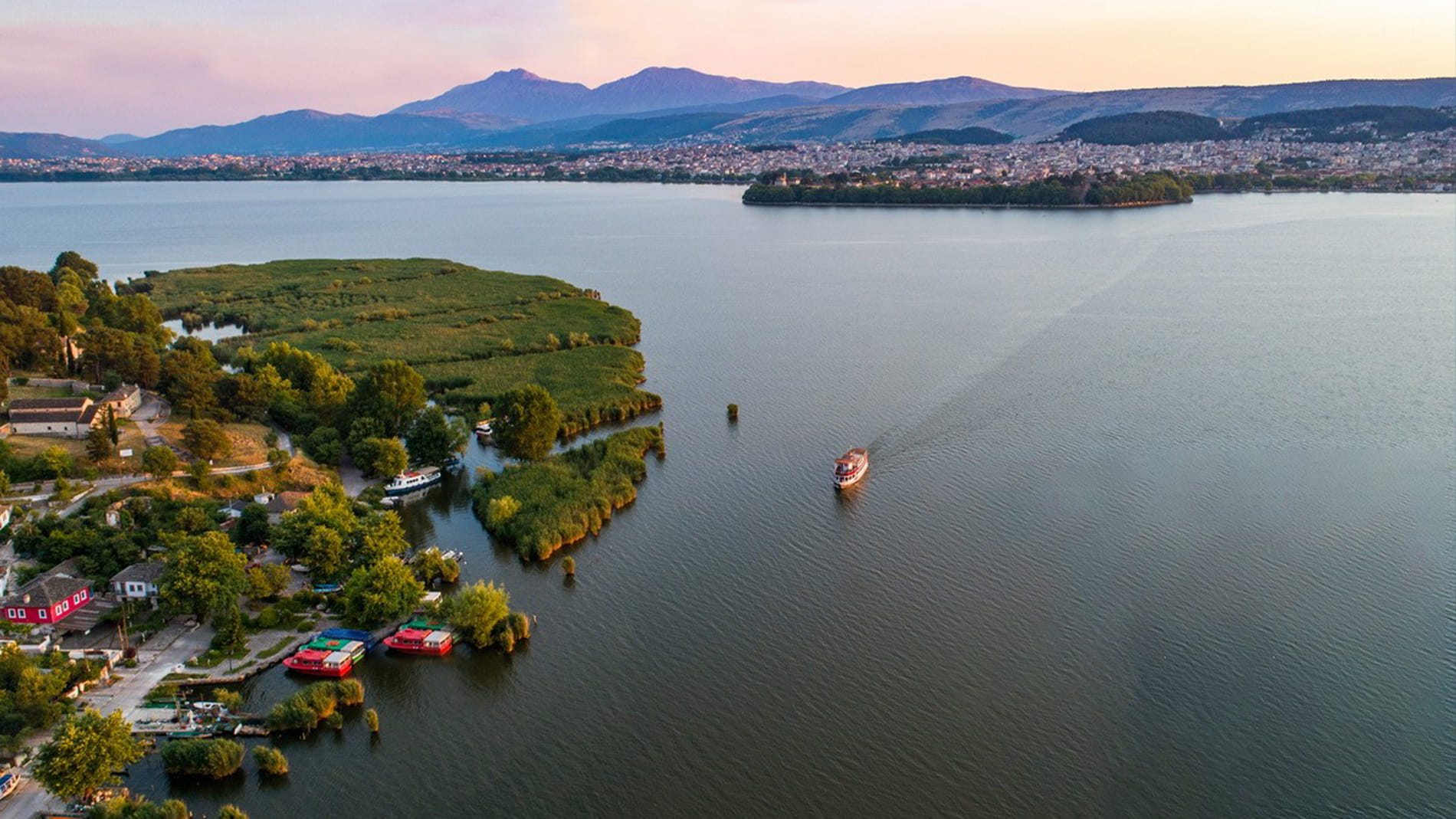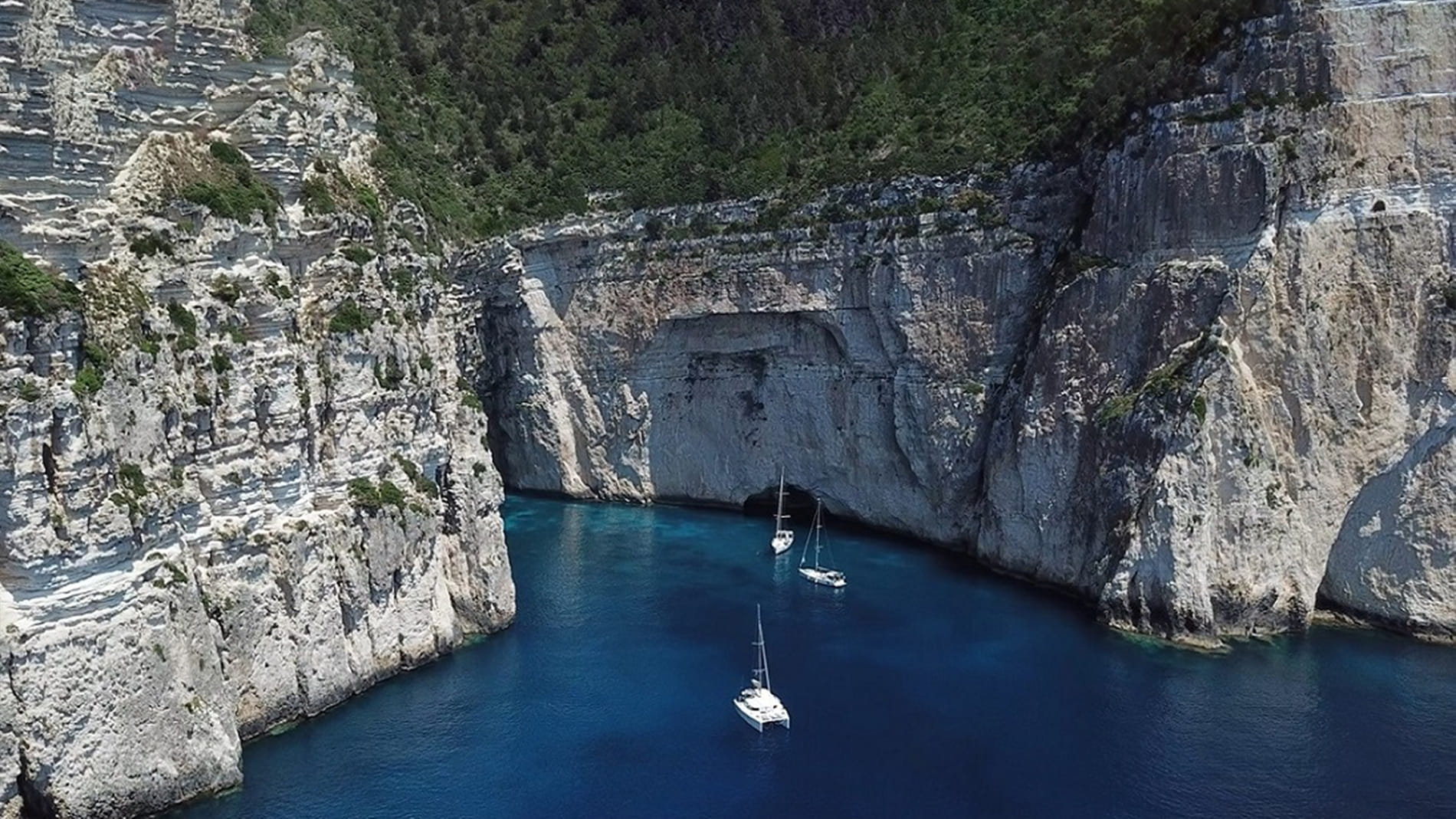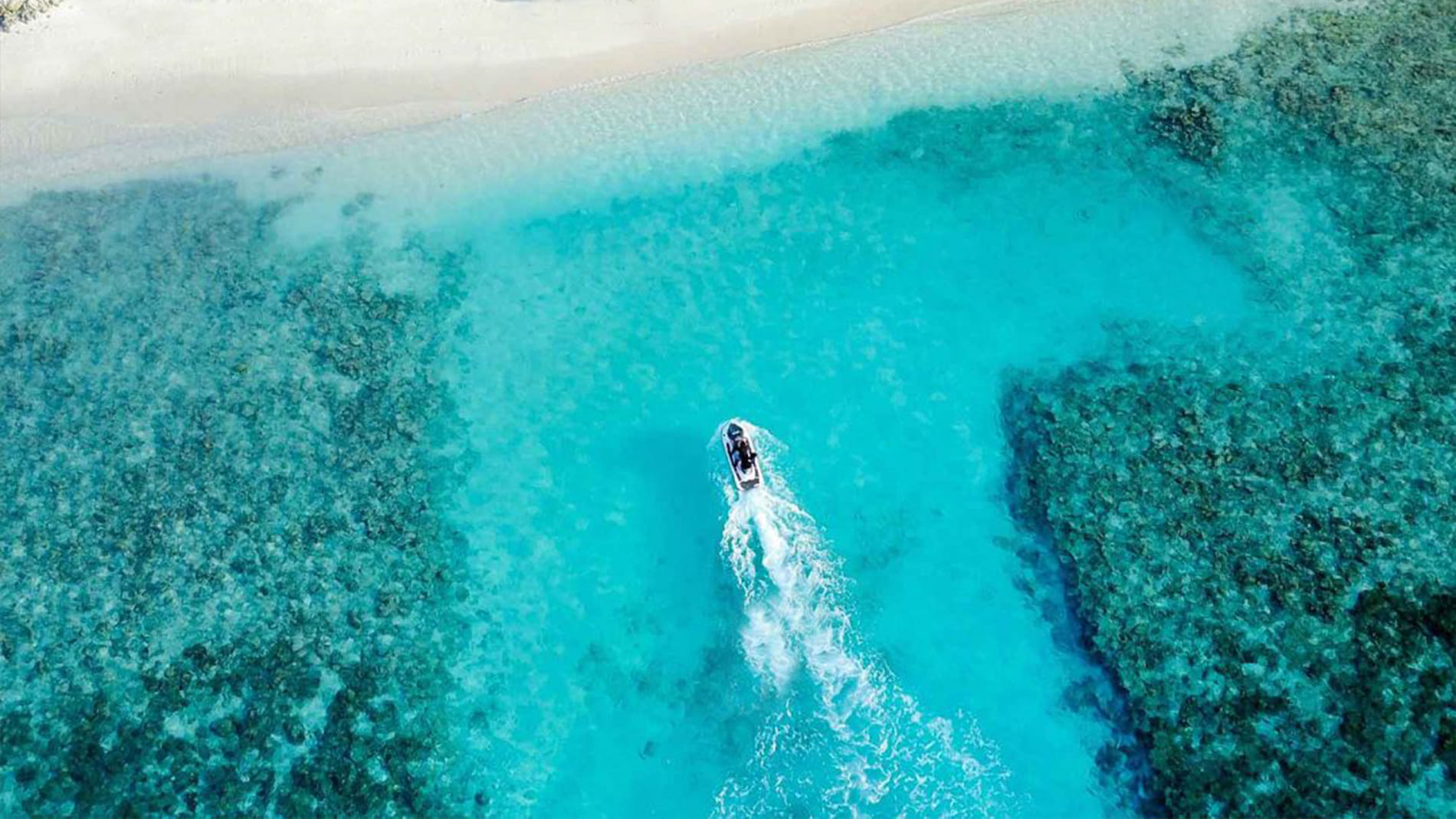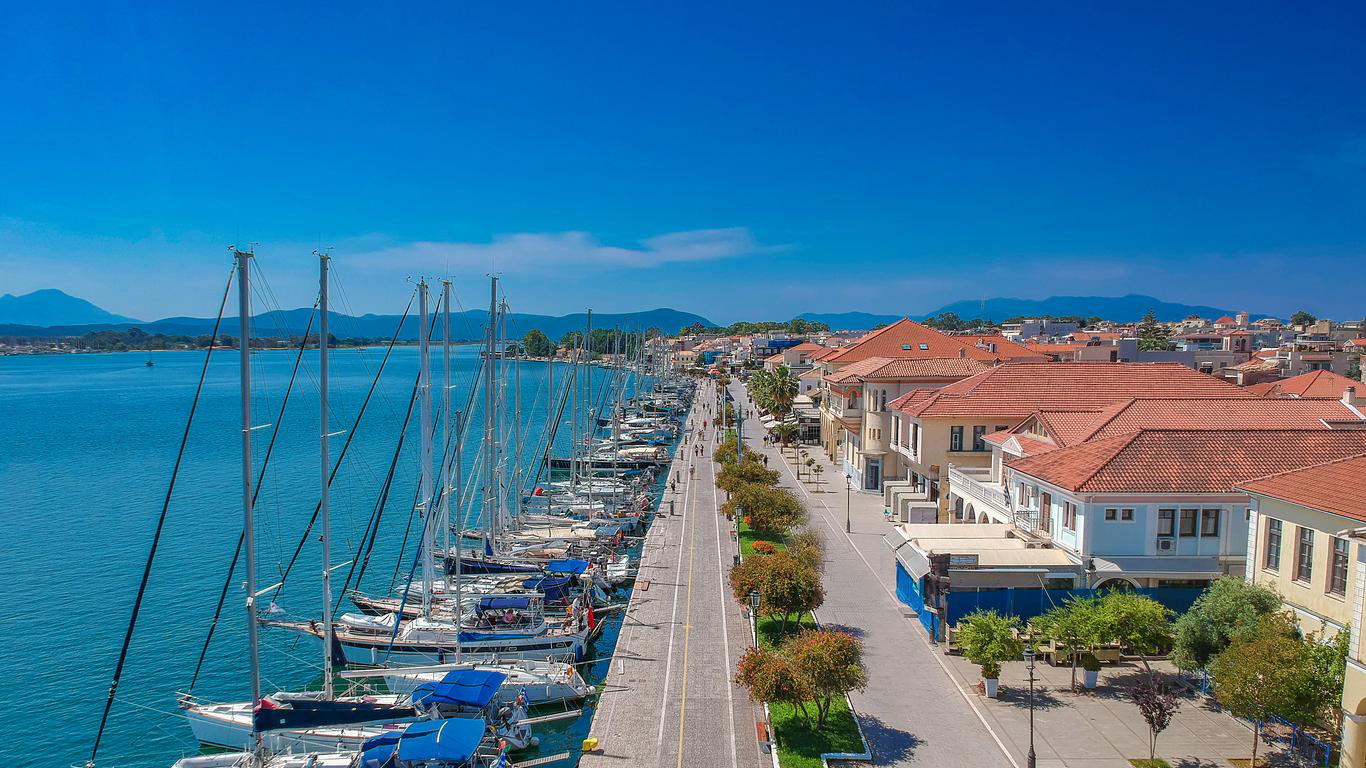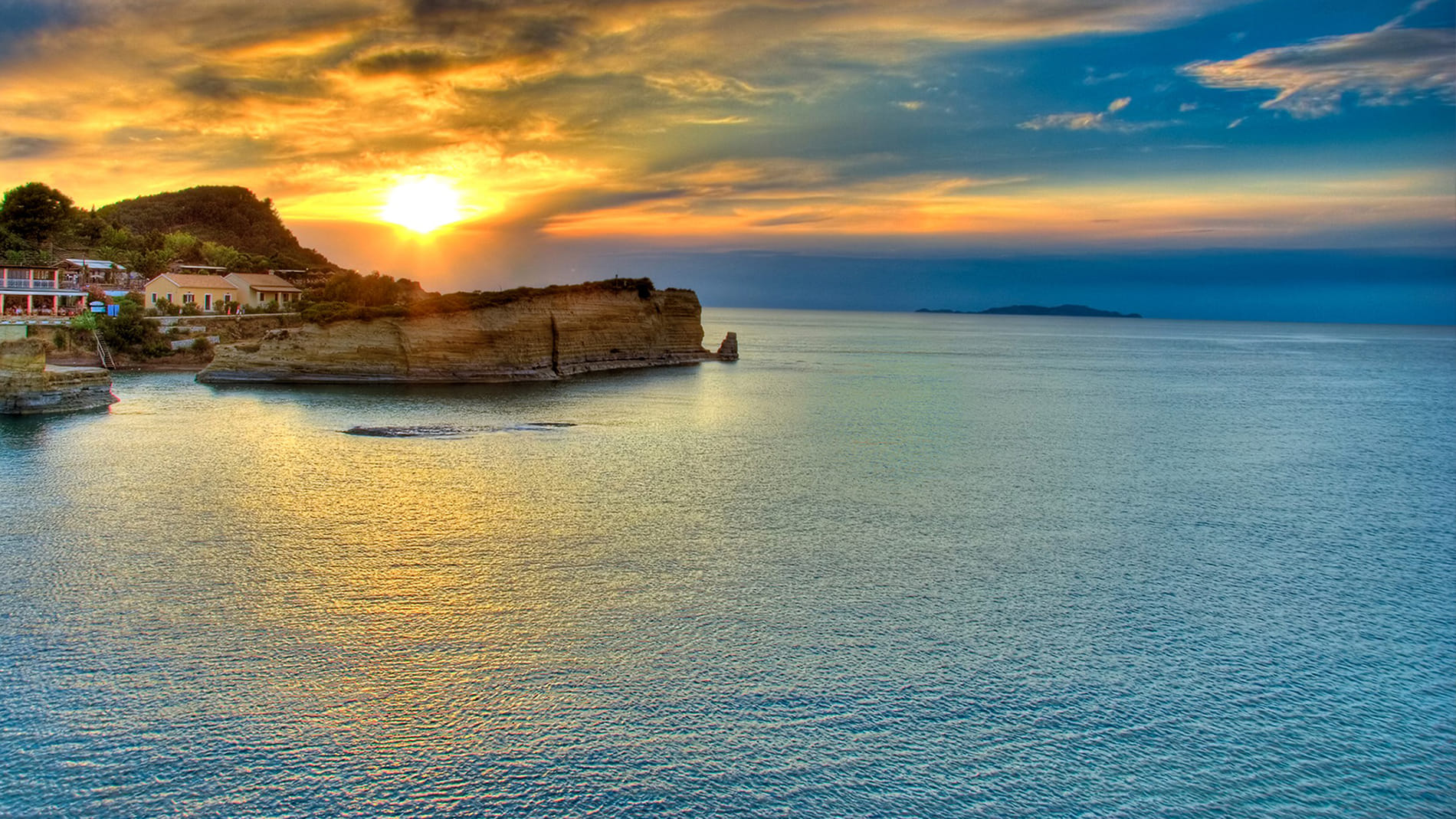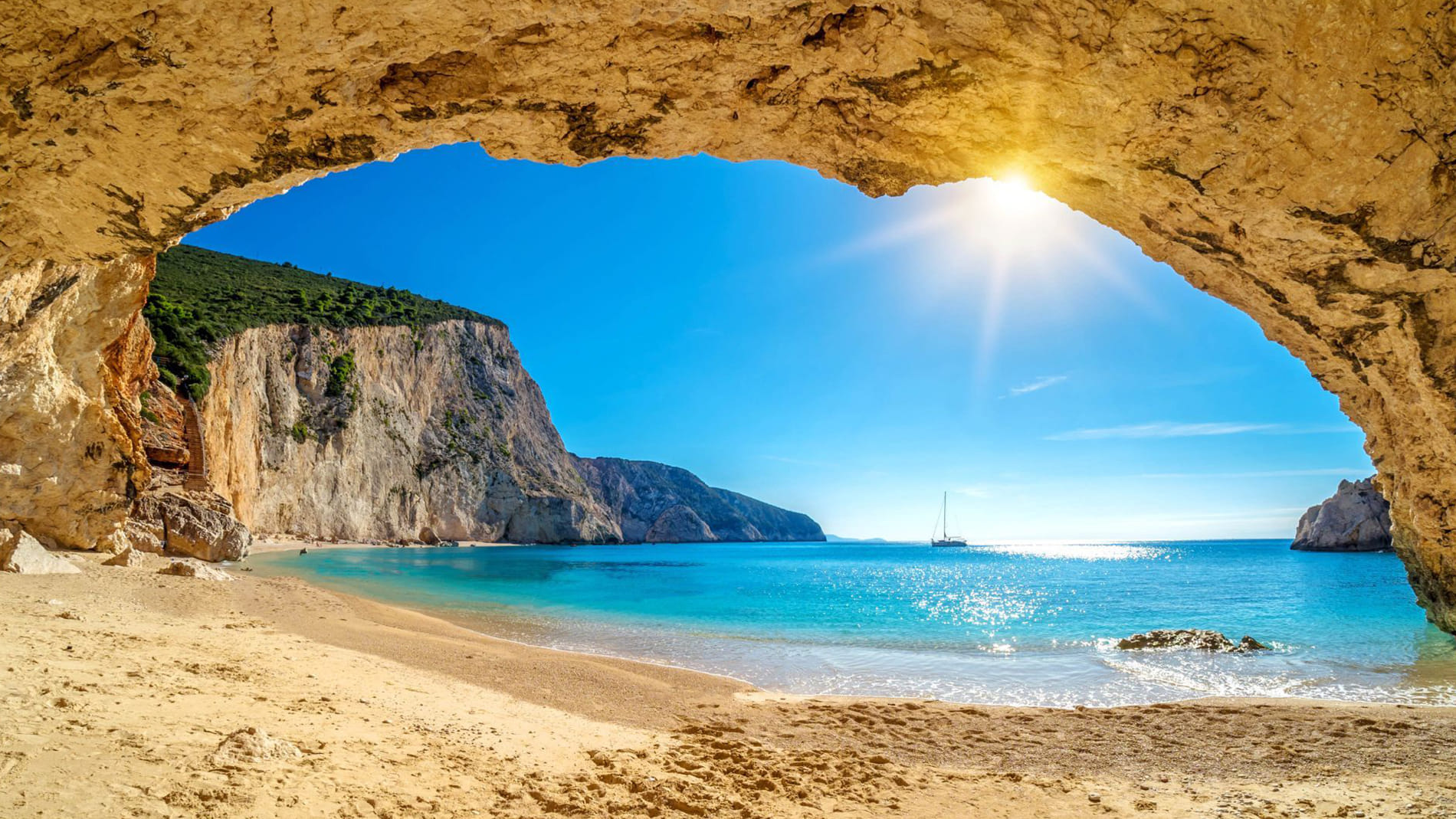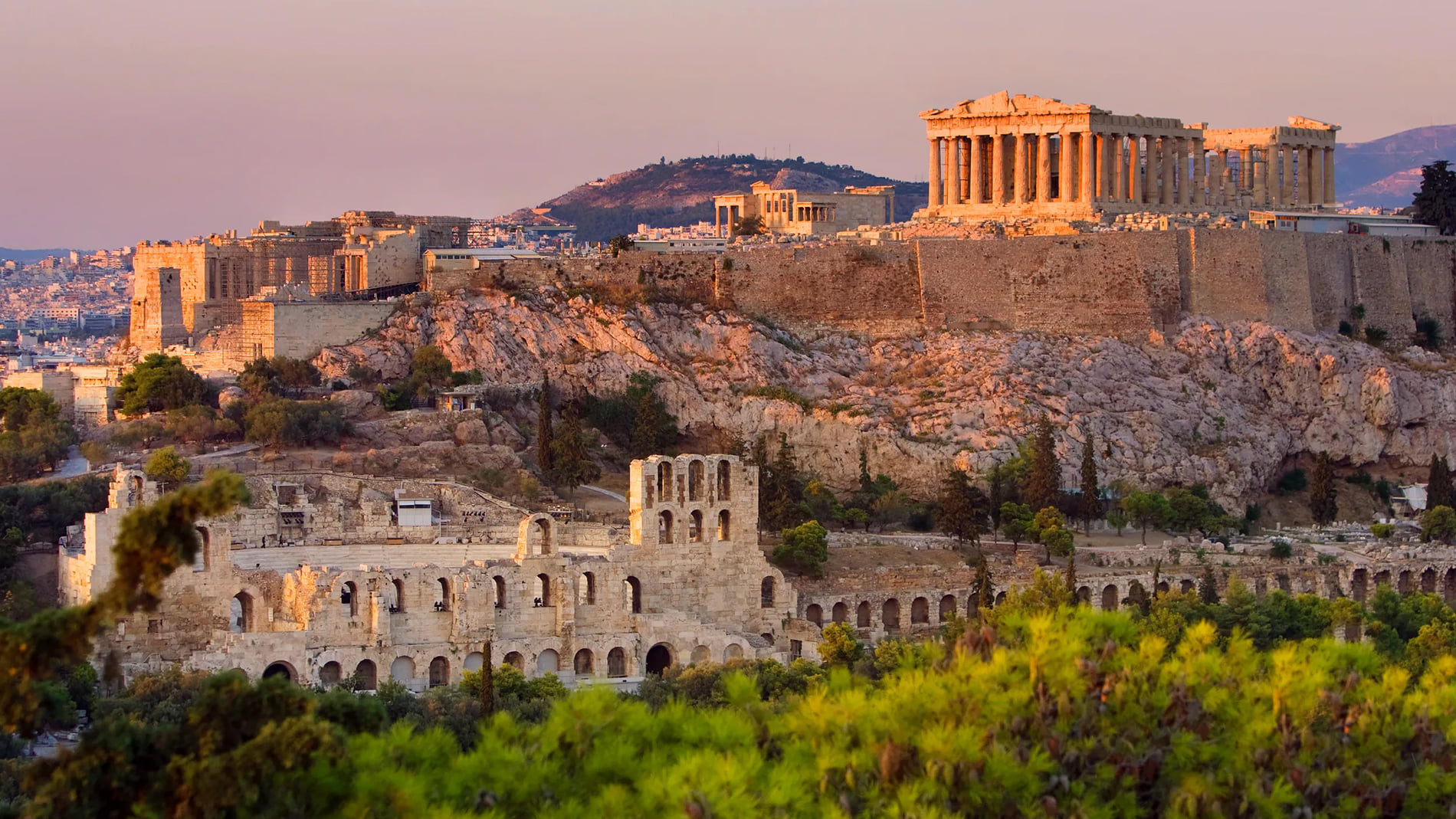The area’s lacy shores are excellent for your refreshing dives and sea water sports, not to mention that beaches offer various services and facilities to make your stay even more pleasant. Krioneri Beach (from where you can swim over to the small island of Panagia) and Piso-Krioneri Beach located within the town’s settlement, the cosmopolitan golden beach of Valtos, the wooded Lychnos Beach with the sea caves, the little bay of Agios Giannakis and finally Sarakiniko Beach with its fine sand and an olive orchard in the background. Starting from Parga pay a visit to the Acheron River Springs, the Αrcheological site of Nekromanteio (Oracle of the Dead), the historic area of Souli as well as to the islands of Paxi-Antipaxi which are reachable with the small boats departing from the town’s port.
Preveza town is located at the mouth of Amvrakikos Gulf, in Western Greece. It is an area blessed with beautiful landscapes, green areas, great beaches, a rich history, ancient sites and monuments; in short you will find here numerous options for memorable holidays. Stroll along the harbour and the old town and see the beautiful traditional buildings; walk on the seaside pedestrian street and enjoy the island-like atmosphere; taste local dishes in a picturesque taverna or coffee shop which line the narrow slab-paved backstreets.
It is the capital of Preveza Regional Unit where you will find the local administrative, commercial, cultural and tourist services.
Visit its castles: the 18th c. Agios Andreas Castle; the mid to late 19th c. well preserved Laskara Castle; and the early 19th c. Pantokratoras Castle, which is built at the mouth of Amvrakikos Gulf. The view from the last one at dusk is spellbinding.
The 18th c. Agios Charalampos cathedral is quite impressive with lovely murals and decorations on the inside and an imposing clock tower on the outside. The ceiling and walls were painted by 18th c. icon painters of the so-called Ionian Islands School of Painting, where the Western European Artistic influence is evident. Notice the marvellous wood-carved iconostasis (icon screen), created by a local craftsman and gilded during the 19th c., the pulpit and the cathedra (the bishop’s throne).
Those of you interested in museums can visit the Municipal Maritime Museum, the Ioannis Moralis Municipal Art Gallery, the Municipal Museum of Natural History (open to groups of visitors, by appointment) and the Folklore Museum of the local community of Kamarina, near Zalongo town. The windmill in the location called “Lighthouse” is also worth a visit.
Enjoy a two wheel ride the way locals do it: on a bicycle. Try a seaside route, starting from Androutsou Sq. towards Vathy, or the route from the slab-paved waterfront towards Kyani Akti, the area around Pantokratoras castle, Alonaki where there is a beautiful beach, and then Drosia area, where you can drink in the marvellous view of the Ionian Sea. Take a trip to Margarona, a picturesque area near Neochori, Agia Triada and Agios Thomas villages, close to Preveza. The experienced bikers among you can enjoy a demanding route which starts from Louros River towards the Gate of Hades (the ancient Greek mythical entry point to the underworld) on Acheron River.
There are 12 hiking routes for you to choose from, if you enjoy walking in nature. You can follow the course of Acheron River from the Gate of Hades all the way to Glyki, Thesprotia region, through green mountains and enjoy a refreshing swim in the river. It’s a favourite destination for rafting and canoeing & kayaking fans, too.
Head to Nikopolis, 7 km north of Preveza town, where there is an important archaeological site, founded by the Roman Emperor Octavian, in commemoration of his victory at the Naval Battle of Actium against Mark Anthony and Cleopatra of Egypt (31 B.C.) Construction took place on a 3.5 km wide strip of land between Mazoma Lagoon formed by Amvrakikos Gulf and the Ionian Sea. During the Roman and the Byzantine times, it flourished as the capital, the administrative, and the religious centre of the roman province of Old Epirus. Nikopolis was deserted after the Bulgarian invasion, during the early 10th c. The archaeological site includes the Roman city walls, an odeum and a theatre (1st c. A.D.), the Monument of Augustus, Nymphaion, the Byzantine city walls, an early Christian mansion, and the king’s house, a Roman building which was used in the early Christian period too. Last but not least, make sure you visit the Archaeological Museum of Nikopolis, where you’ll see exhibits dating to the Roman, Early Christian and Byzantine years and you will learn about local life during the medieval and later times.
Plan your next trip at the estuaries of Louros and Arachthos Rivers, where the Amvrakikos wetland is located. The area is part of the Natura 2000 Network and it is protected by the Ramsar Convention on Wetlands. Enjoy a day trip on the tourist boat that tours the gulf, or hire a sailing boat at the marina, and look for the dolphins who roam these waters.
Visit Kamarina and Kryopigi villages, 25.5 km NW of Preveza; the location affords wonderful views of Amvrakikos Gulf and the Ionian Sea. Stop by the archaeological site of ancient Kassopi, the capital of the land of the Kassopeans, an Epirote tribe; the town was established just before the mid-4th c. BC, and it was gradually abandoned when Nikopolis was founded.
Continue NW to Zalongo, located at a 29 km distance from Preveza. An act of great bravery took place here, in December 1803. Local women from Souli village chose to dive off Zalongo’s steep rocks holding their kids in their arms to escape being captured by Ali Pasha’s forces who were chasing them. In honour of these heroic women, a monument was raised in 1961 by sculptor G. Zongolopoulos and architect P. Karantinos.
Near Kyani Akti (meaning Blue Coast), there are hot springs you can visit. Paliosaraga is the location’s name, and their waters are beneficial to rheumatism and arthritis conditions.
Pick among the long list of wonderful beaches for swimming or for playing beach volleyball, such as Kyani Akti, Pantokratoras, Alonaki, Kalamitsi, Mytikas, and Monolithi. If you head east, go for swimming in Psathaki, Skafidaki and Agioi Apostoloi beaches.
